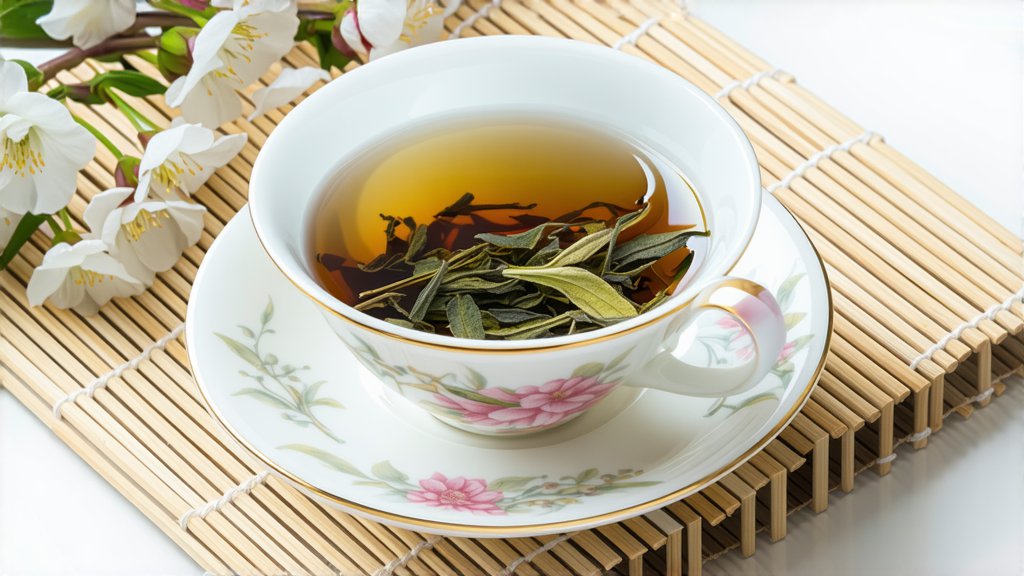
In the vast and diverse landscape of Chinese tea culture, few varieties capture the imagination and senses quite like the revered Fujian White Peony, or Bai Mudan (白牡丹) as it is known in Mandarin. This exquisite white tea hails from the Fujian province, nestled in the southeastern part of China, where the climate, soil, and altitude create an ideal terroir for cultivating high-quality tea plants.
A Glimpse into History
The origins of Bai Mudan can be traced back to the early Qing Dynasty, around the 1790s. It is said that this tea was first created by accident when a tea farmer named Wang Xuezhong decided to experiment with his harvest. Instead of following the traditional methods of rolling and shaping the tea leaves, he allowed them to dry naturally under the sun. This serendipitous event led to the birth of one of the most beloved white teas in the world.
Varieties and Classifications
Bai Mudan is primarily made from the Camellia sinensis plant, specifically from the buds and two youngest leaves of the tea plant. There are several grades of Bai Mudan, each distinguished by the proportion of buds to leaves and the overall quality of the raw materials used. The highest grade, known as "Shoumei" (寿眉), consists mainly of buds and has a more delicate flavor profile. Lower grades may include more leaves and stems, resulting in a bolder taste.
The Art of Production
The production process of Bai Mudan is both simple and meticulous, ensuring that the tea retains its natural purity and essence. Here's a step-by-step overview:
-
Plucking: The finest buds and leaves are handpicked during the spring season, typically between March and April. Only the topmost tender shoots are selected, ensuring the highest quality.
-
Withering: After plucking, the leaves are spread out on bamboo mats or trays to undergo natural withering. This process allows the leaves to lose moisture gradually, enhancing their aroma and flavor.
-
Drying: Once sufficiently withered, the leaves are gently dried either through sun exposure or low-temperature oven drying. Sun drying is believed to impart a subtle sweetness to the tea.
-
Sorting and Packaging: Finally, the dried tea is carefully sorted to remove any imperfections before being packaged for distribution.
Tasting Notes and Appreciation
To truly appreciate Bai Mudan, one must engage in a mindful tasting experience. Here's how you can savor this exceptional tea:
-
Preparation: Use about 3-5 grams of Bai Mudan per 200ml of water. Boil fresh spring water and allow it to cool slightly to around 80-85°C (176-185°F).
-
Infusion: Place the tea leaves in a gaiwan or a glass teapot. Pour the hot water over the leaves and let them steep for approximately 2-3 minutes. For subsequent infusions, increase the steeping time incrementally.
-
Observation: As the tea brews, observe the unfurling of the leaves and the gradual release of their color and aroma. Bai Mudan yields a pale yellowish liquor with a hint of green, reminiscent of its fresh and vibrant origins.
-
Aroma: Before sipping, take a moment to inhale the subtle fragrance of Bai Mudan. Notes of honey, melon, and a delicate floral undertone should be present, reflecting the tea's unique character.
-
Taste: Sip slowly, allowing the tea to coat your palate. Bai Mudan offers a smooth, silky texture with a balanced sweetness that lingers on the tongue. Its flavor profile is often described as light, refreshing, and slightly vegetal, with a clean finish.
-
Aftertaste: Pay attention to the aftertaste, which should be long-lasting and pleasantly sweet, leaving a soothing sensation in your mouth.
In conclusion, Bai Mudan is not merely a beverage; it is an invitation to explore the depths of Chinese tea culture and tradition. From its storied past to its intricate production process and nuanced flavors, every aspect of this tea speaks volumes about the artistry and dedication inherent in tea making. Whether you are a seasoned tea connoisseur or a curious newcomer, indulging in a cup of Bai Mudan promises a journey of sensory delight and cultural enrichment.